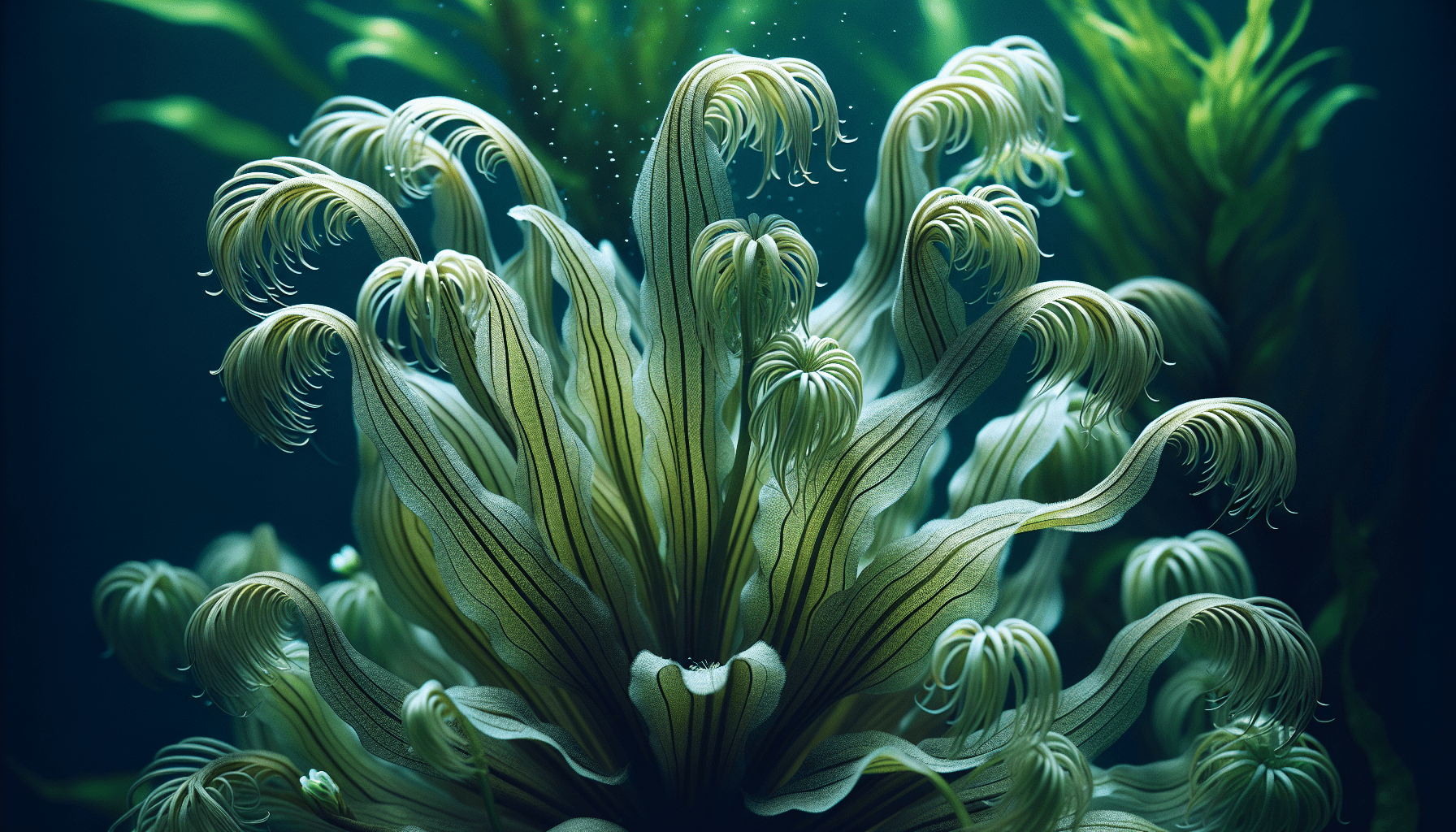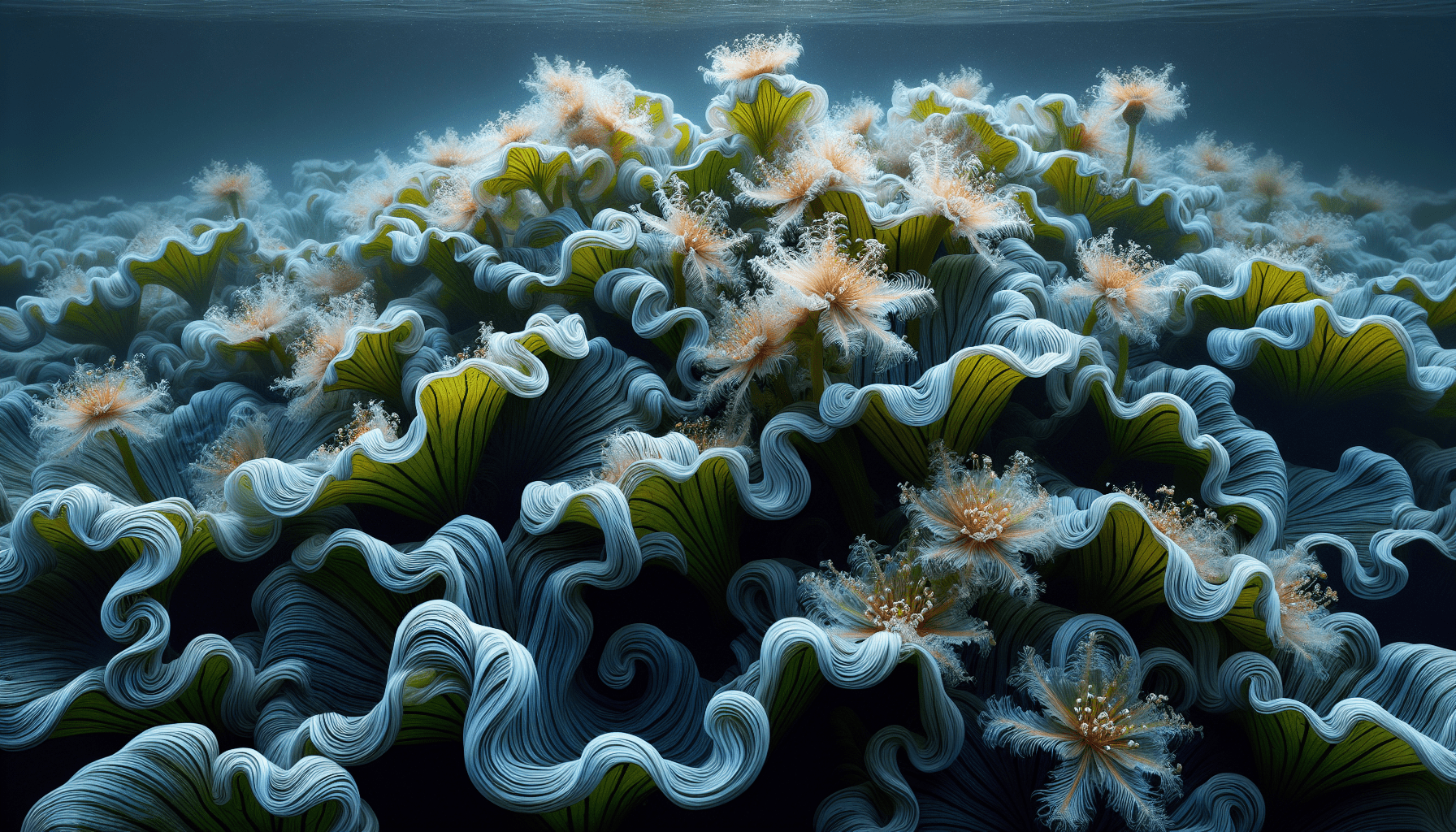The focus of this discourse is Aponogeton Ulvaceus, a specific type of aquatic plant known colloquially as an aquatic weed. This analysis will provide an understanding of the inherent characteristics and ecological significance of this plant, offering a thorough overview of this intriguing organism. Aponogeton Ulvaceus, a species of great aesthetic value to aquarium enthusiasts, holds a vital role in a variety of freshwater ecosystems and is hence of considerable interest to both the scientific community and hobbyists alike.
General Overview
Definition of Aponogeton Ulvaceus
Aponogeton Ulvaceus is a type of aquatic plant that is part of the Aponogetonaceae family. It is characterized by its long, undulating leaves, and it’s often seen in aquatic settings such as ponds and aquariums. This submersed plant is highly prized for its aesthetic features and its role in aquascaping.
Common names and synonyms
Besides its scientific name, Aponogeton Ulvaceus, it is also commonly referred to as Spear Leaf or Crispy Wave-Leaf Aponogeton in the world of aquatic horticulture. Synonymous names include Aponogeton Undulatus; however, Aponogeton Ulvaceus is the universally accepted name.
Description and physical attributes
Physically, the Aponogeton Ulvaceus is best known for its signature long, dark-green leaves that undulate in the water, which serves a dual purpose of providing aesthetic appeal and a functional habitat for aquatic life. This aquatic plant can reach a height of up to 60cm, with individual leaves that can grow up to 35cm long and 6cm wide.
Geographical Distribution
Native habitats
Originally, the Aponogeton Ulvaceus is native to the tropical areas of Madagascar, an island nation off the southeastern coast of Africa known for its diverse and unique plant and animal life.
Regions of proliferation
Impressively adaptable, Aponogeton Ulvaceus has escaped the boundaries of Madagascar and established itself in various regions worldwide, most notably in many Asian regions.
Optimum environmental conditions
Aponogeton Ulvaceus thrives in conditions typically associated with their native tropical environments. They prefer warm water environments with temperatures ranging from 22 to 28 degrees Celsius.

Biological Features
Leaf structure and design
The elongated, oblique leaves of the Aponogeton Ulvaceus, which may appear wavy or curly, are its most distinctive feature. The color is usually vibrant green and typically slender with a transparent look.
Flower and seed description
Apart from its leaves, the Aponogeton Ulvaceus also boasts distinct inflorescences or flowering parts. These may appear above the water surface, adding to its visual appeal. The plants bloom with small white flowers that produce seeds for reproduction.
Root system details
The root system of Aponogeton Ulvaceus consists of a tuber for storing food and nutrients. The roots extend from the tuber, anchoring the plant in the substrate and absorbing essential water and nutrients.
Propagation Methods
Asexual reproduction process
Aponogeton Ulvaceus can produce small bulbs that grow into new plants. This asexual propagation is common in captive conditions, such as aquariums.
Sexual reproduction process
Sexual reproduction in Aponogeton Ulvaceus takes place when the flowers are pollinated, either by wind or water movement, leading to the formation of seeds. The seeds can float on the water surface, carried to different locations where they can sprout and form a new plant.
Germination and growth cycles
The plant can have a dormant period, especially in adverse conditions. Seeds generally sprout within a few weeks under favorable conditions, with the plant reaching full size within a few months.

Cultivation Practices
Ideal growing mediums
While Aponogeton Ulvaceus can tolerate a range of substrates, they usually prefer nutrient-rich soil. In an aquarium setting, it is advised to use fine, inert gravel or commercial aquatic plant substrates.
Temperature and light requirements
Aponogeton Ulvaceus favours warm temperatures between 22 to 28 degrees Celsius and a pH range between 6.5 to 7.5. They prefer medium to high light conditions but can tolerate lower light levels.
Fertilization and nutrient needs
These species of aquatic plants require adequate amounts of macro and micronutrients for optimal growth. Regular fertilization using a nutrient-rich aquatic plant fertilizer is recommended.
Use in Aquascaping
Placement in aquascape design
Due to its size and shape, Aponogeton Ulvaceus works well as a background or midground plant in an aquascape. It provides a striking backdrop for other plants and aquatic species.
Benefits to the aquatic ecosystem
This plant provides an excellent habitat and hiding places for fish and other aquatic creatures. Furthermore, it acts as a natural filter, absorbing excess nutrients from the water, thereby helping to maintain water quality.
Care and maintenance in aquascapes
In aquascapes, regular maintenance is required to keep the size in check and ensure it does not overgrow and crowd the other plants. Pruning the leaves occasionally is also recommended.
Potential Health Benefits
Nutritional value
While not typically consumed by humans, Aponogeton Ulvaceus leaves are known to have nutritional value for some aquatic creatures, providing necessary minerals and nutrients.
Medicinal use and benefits
Though not widely studied, traditional uses include utilising the plant, primarily the leaves, for dressing wounds and treating skin conditions in local folk medicine.
Other health-related uses
It is worthy to note that this plant’s presence in an aquatic environment can be calming and therapeutic, contributing significantly to human mental wellbeing.
Ecological Impacts
Roles in the ecosystem
Aponogeton Ulvaceus plays an essential role in its native ecosystem as a biofilter and habitat for aquatic creatures. It aids in nutrient cycling, water purification and providing food and shelter to other organisms.
Interactions with other species
Although it generally coexists peacefully with other aquatic species, it can outcompete other plants for light and nutrients, mainly when allowed to proliferate unchecked.
Impact on biodiversity
Overall, Aponogeton Ulvaceus is beneficial to biodiversity when in balance, providing habitats and food sources. However, unchecked growth can lead to decreased biodiversity by outcompeting and overshadowing other aquatic plants and animals.
Possible Issues and Problems
Potential for invasive behavior
Aponogeton Ulvaceus displays invasive behaviour when environmental conditions are optimal. It proliferates rapidly, which can lead to it overwhelming native plants and altering habitats.
Diseases and pests common to Aponogeton Ulvaceus
Aponogeton Ulvaceus is largely free of diseases and pests, although snails may occasionally be attracted to the soft leaves. They may also be susceptible to nutrient deficiencies if not properly cared for.
Management and control tactics
To prevent the plant from becoming invasive, regular pruning and removal of excess growth are essential. Additionally, its proliferation can be curbed by limiting nutrient availability and altering light conditions.
Research and Studies
High-impact research papers and studies
While not extensively studied, a few research papers have investigated Aponogeton Ulvaceus’s potential medicinal properties, use in aquascapes, and roles in aquatic ecosystems.
Existing gap in the research
More research is needed to fully understand and utilise Aponogeton Ulvaceus. There exist gaps in the current understanding of its full potential – especially in the realm of medicinal benefits.
Future research directions
Future research could explore this plant’s potential benefits for human health, its influence on water quality, and possible uses beyond the realm of aquascaping. Furthermore, potential cultivation methods for mass propagation could be investigated.